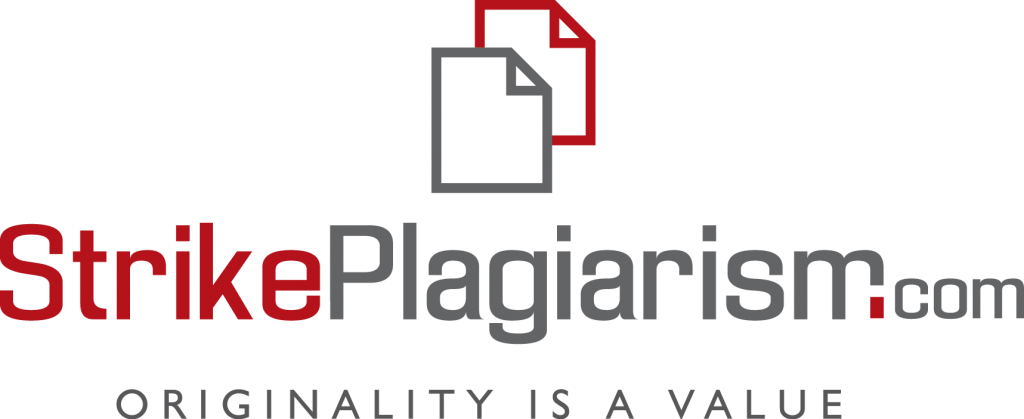ФОРМУВАННЯ СТРАТЕГІЧНОЇ АДАПТИВНОСТІ ПІДПРИЄМСТВ ДЛЯ ДОСЯГНЕННЯ СТІЙКИХ РЕЗУЛЬТАТІВ В УМОВАХ РИНКОВОЇ НЕВИЗНАЧЕНОСТІ
Анотація
У нестабільному, невизначеному, комплексному та неоднозначному (VUCA) бізнес-середовищі підприємства повинні не тільки застосовувати динамічні можливості, але й постійно їх вдосконалювати. У статті розкрито поняття метадинамічних можливостей (MDC) як стратегічної здатності вищого рівня, яка дозволяє організації адаптуватися та реконфігурувати власні динамічні можливості в умовах турбулентності. Методологічно дослідження базується на аналізі кейс-стаді 7 реальних компаній з різних секторів, включаючи технологічний, виробничий та сервісний, які демонструють появу MDC на практиці. Результати дослідження ілюструють, як такі компанії, як Danaher, Netflix, Amazon, Microsoft, Haier та інші, розвинули стратегічну адаптивність, переконфігурувавши не тільки свої ресурси, але й самі процеси динамічних можливостей. Обговорено теоретичний вклад MDC у концепцію динамічних можливостей (DCV) шляхом розширення їх сфери застосування, що дозволяє краще зрозуміти, як компанії виживають і досягають зростання в умовах високої невизначеності.
Посилання
Adler, P. S., Goldoftas, B., & Levine, D. I. (1999). Flexibility versus efficiency? A case study of model changeovers in the Toyota Production System. Organization Science, 10(1), 43–68. DOI: https://doi.org/10.1287/orsc.10.1.43
Adner, R., & Helfat, C. E. (2003). Corporate effects and dynamic managerial capabilities. Strategic Management Journal, 24(10), 1011–1025. DOI: https://doi.org/10.1002/smj.331
Al Moaid, N. A. A., & Almarhdi, S. G. (2024). Developing dynamic capabilities for successful digital transformation projects: The mediating role of change management. Journal of Innovation and Entrepreneurship, 13, Article 85. DOI: https://doi.org/10.1186/s13731-024-00446-9
Argyris, C., & Schön, D. A. (1978). Organizational learning: A theory of action perspective. Reading, MA: Addison-Wesley.
Atanassova, I., Bednar, P., Khan, H., & Khan, Z. (2025). Managing the VUCA environment: The dynamic role of organizational learning and strategic agility in B2B versus B2C firms. Industrial Marketing Management, 125, 12–28. DOI: https://doi.org/10.1016/j.indmarman.2024.12.008
Bennett, N., & Lemoine, G. J. (2014). What VUCA really means for you. Harvard Business Review, 92(1/2), 27–+. (January–February 2014 issue).
Bogodistov, Y., Presse, A., Krupskyi, O. P., & Sardak, S. (2017). Gendering dynamic capabilities in micro firms. RAE – Revista de Administração de Empresas, 57(3), 273–282. DOI: https://doi.org/10.1590/S0034-759020170305
Cohen, W. M., & Levinthal, D. A. (1990). Absorptive capacity: A new perspective on learning and innovation. Administrative Science Quarterly, 35(1), 128–152. DOI: https://doi.org/10.2307/2393553
Collis, D. J. (1994). Research note: How valuable are organizational capabilities? Strategic Management Journal, 15(S1), 143–152. DOI: https://doi.org/10.1002/smj.4250150910
Collis, D. J., & Anand, B. N. (2021). The virtues and limitations of dynamic capabilities. Strategic Management Review, 2(1), 47–78. DOI: https://doi.org/10.1561/111.00000017
Doz, Y. L., & Kosonen, M. (2010). Embedding strategic agility: A leadership agenda for accelerating business model renewal. Long Range Planning, 43(2–3), 370–382. DOI: https://doi.org/10.1016/j.lrp.2009.07.006
Eisenhardt, K. M., & Martin, J. A. (2000). Dynamic capabilities: What are they? Strategic Management Journal, 21(10–11), 1105–1121. DOI: https://doi.org/10.1002/1097-0266(200010/11)21:10/11<1105::AID-SMJ133>3.0.CO;2-E
Gibson, C. B., & Birkinshaw, J. (2004). The antecedents, consequences, and mediating role of organizational ambidexterity. Academy of Management Journal, 47(2), 209–226. DOI: https://doi.org/10.2307/20159573
Hannan, M. T., & Freeman, J. (1984). Structural inertia and organizational change. American Sociological Review, 49(2), 149–164. DOI: https://doi.org/10.2307/2095567
Helfat, C. E., & Peteraf, M. A. (2015). Managerial cognitive capabilities and the microfoundations of dynamic capabilities. Strategic Management Journal, 36(6), 831–850. DOI: https://doi.org/10.1002/smj.2247
Helfat, C. E., et al. (2007). Dynamic capabilities: Understanding strategic change in organizations. Malden, MA: Blackwell.
Kolodiziev, O., Krupka, M., Shulga, N., Kulchytskyy, M., & Lozynska, O. (2021). The level of digital transformation affecting the competitiveness of banks. Banks and Bank Systems, 16(1), 81–91. DOI: https://doi.org/10.21511/bbs.16(1).2021.08
Krupskyi, O. P., & Grynko, T. (2018). Role of cognitive style of a manager in the development of tourism companies’ dynamic capabilities. Tourism and Hospitality Management, 24(1), 1–21.
Leonard-Barton, D. (1992). Core capabilities and core rigidities: A paradox in managing new product development. Strategic Management Journal, 13(S1), 111–125. DOI: https://doi.org/10.1002/smj.4250131009
March, J. G. (1991). Exploration and exploitation in organizational learning. Organization Science, 2(1), 71–87. DOI: https://doi.org/10.1287/orsc.2.1.71
Martin, J. A. (2011). Dynamic managerial capabilities and the multibusiness team: The role of episodic teams in executive leadership groups. Organization Science, 22(1), 118–140. DOI: https://doi.org/10.1287/orsc.1090.0515
Nadella, S., with Hood, G. (2017). Hit Refresh: The quest to rediscover Microsoft’s soul and imagine a better future for everyone. New York: HarperBusiness.
Nohria, N., & Gulati, R. (1996). Is slack good or bad for innovation? Academy of Management Journal, 39(5), 1245–1264. DOI: https://doi.org/10.2307/256998
O’Reilly, C. A., & Tushman, M. L. (2013). Organizational ambidexterity: Past, present, and future. Academy of Management Perspectives, 27(4), 324–338. DOI: https://doi.org/10.5465/amp.2013.0025
Raisch, S., & Birkinshaw, J. (2008). Organizational ambidexterity: Antecedents, outcomes, and moderators. Journal of Management, 34(3), 375–409. DOI: https://doi.org/10.1177/0149206308316058
Rataul, P., Tisch, D., & Zamborsky, P. (2018). Netflix: Dynamic capabilities for global success (SAGE Business Cases). The University of Auckland Business School Research Paper (Case study). DOI: https://doi.org/10.4135/9781526439871
Senge, P. M. (1990). The fifth discipline: The art and practice of the learning organization. New York: Doubleday.
Schilke, O., Hu, S., & Helfat, C. E. (2018). Quo vadis, dynamic capabilities? A content-analytic review of the current state of knowledge and recommendations for future research. Academy of Management Annals, 12(1), 390–439. DOI: https://doi.org/10.5465/annals.2016.0014
Shang, Y., Jiang, J., Zhang, R., Zhang, Y., Liu, P., & Yu, L. (2025). The mechanism of human–machine collaboration driving sustainable business models: Evidence from Tesla. Journal of Cleaner Production. Advance online publication. DOI: https://doi.org/10.1016/j.jclepro.2025.145152
Snyder E.A., Canaday J., & Hughes M. (2022). Amazon’s Three Major Lines of Business (Stigler Center Working Paper #319). DOI: https://doi.org/10.2139/ssrn.4162112
Teece, D. J., Pisano, G., & Shuen, A. (1997). Dynamic capabilities and strategic management. Strategic Management Journal, 18(7), 509–533. DOI: https://doi.org/10.1002/(SICI)1097-0266(199708)18:7<509::AID-SMJ882>3.0.CO;2-Z
Teece, D. J. (2007). Explicating dynamic capabilities: The nature and microfoundations of (sustainable) enterprise performance. Strategic Management Journal, 28(13), 1319–1350. DOI: https://doi.org/10.1002/smj.640
Teece, D. J. (2016). Dynamic capabilities and entrepreneurial management in large organizations: Toward a theory of the (entrepreneurial) firm. European Economic Review, 86, 202–216. DOI: https://doi.org/10.1016/j.euroecorev.2015.11.006
Teece, D. J., et al. (2016). Dynamic capabilities and organizational agility: Risk, uncertainty, and strategy in the innovation economy. California Management Review, 58(4), 13–35. DOI: https://doi.org/10.1525/cmr.2016.58.4.13
Venkataraman, A., Madsen, J. L., & Abrantes, B. F. (2023). Change-readiness as an essential meta-dynamic capability (MDC) tested under the effect of the General Data Protection Regulation (GDPR). In B. F. Abrantes & J. L. Madsen (Eds.), Essentials on dynamic capabilities for a contemporary world (pp. 25–45). Cham: Springer. DOI: https://doi.org/10.1007/978-3-031-34814-3_2
Warner, K. S. R., & Wäger, M. (2019). Building dynamic capabilities for digital transformation: An ongoing process of strategic renewal. Long Range Planning, 52(3 4), 326–349. DOI: https://doi.org/10.1016/j.lrp.2018.12.001
Wilden, R., Devinney, T. M., & Dowling, G. R. (2016). The architecture of dynamic capability research: Identifying the building blocks of a configurational approach. Academy of Management Annals, 10(1), 997–1076. DOI: https://doi.org/10.1080/19416520.2016.1161966
Winter, S. G. (2003). Understanding dynamic capabilities. Strategic Management Journal, 24(10), 991–995. DOI: https://doi.org/10.1002/smj.318
Zahra, S. A., & George, G. (2002). Absorptive capacity: A review, reconceptualization, and extension. Academy of Management Review, 27(2), 185–203. DOI: https://doi.org/10.5465/amr.2002.6587995
Zahra, S. A., Sapienza, H. J., & Davidsson, P. (2006). Entrepreneurship and dynamic capabilities: A review, model and research agenda. Journal of Management Studies, 43(4), 917–955. DOI: https://doi.org/10.1111/j.1467-6486.2006.00616.x
Zhang, R., & Wei, J. (2017). Haier’s Rendanheyi model: Inventing a new management practice. Management and Organization Review, 13(3), 665–673. DOI: https://doi.org/10.1017/mor.2017.41
Zollo, M., & Winter, S. G. (2002). Deliberate learning and the evolution of dynamic capabilities. Organization Science, 13(3), 339–351. DOI: https://doi.org/10.1287/orsc.13.3.339.2780



